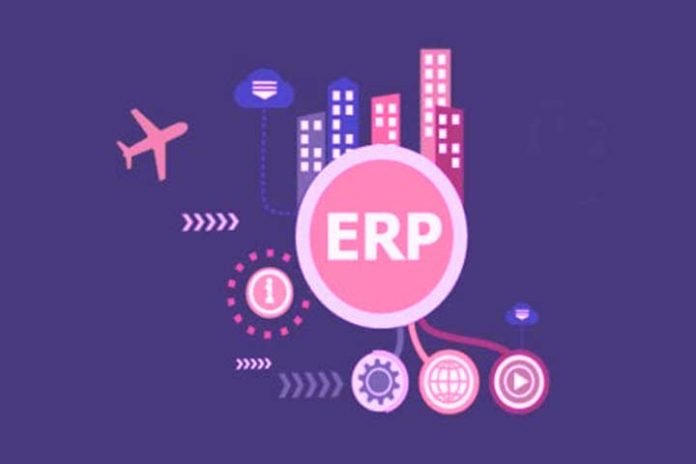Automating processes and their standardization within our organization allows us to have a standard action framework when executing them. With the integration of a BPM module in an Enterprise Resource Planning ERP, the management system is provided with a set of functionalities aimed at facilitating the management of the business activities of our company, regardless of the areas involved in carrying them out.
This extension within an ERP management system allows us to detect failures or deviations in the execution phases of the different processes. Thanks to this, we will be able to carry out corrective actions that promote the improvement of business operations.
By managing the processes of our organization under this premise, we will be able to carry out correct planning of the entire network of processes. And, in addition, we will achieve better results in less time by using available resources more efficiently.
Process-based management
Having a strong methodological culture can be a good starting point to get closer to this efficient management model, whose main characteristic is the predictability of all the stages of the chain and the actions to be carried out in each one of them. A system of this type gives the heads of each department the possibility of knowing the degree of fulfillment of the tasks contained in the workflows.
It also contributes to increasing the quality of communication between team members and, in certain cases, minimizing interaction between them when it is not necessary. If we take this last concept into account, certain stages of the workflow do not require personnel intervention; that is, they are capable of automation.
However, before being immersed in this interesting way to increase our company’s productivity, it is necessary to design and test each process. It is necessary to study it from different perspectives and ensure the technological and organizational means necessary for its integration into the general flow chart of the company.
At this point, ERP systems integrated with BPM tools are essential to introduce a solid process-oriented methodology. It is a shared functionality that interacts in each area of the business and relates it to the others, reducing the administrative impact of many tasks and leaving absolute traceability throughout the entire circuit.
An automation tool allows the launch of actions when a certain condition occurs in some part of the flow—for example, sending a specific email template based on launching a predesigned form that transmits your data to another section of the process.
Process automation: implementation and tools at our fingertips
Although the organizational benefits provided by this kind of solution are beyond any doubt, given its transversal nature, it is necessary to have an implementation methodology based on phases that allows it to be assimilated by all internal users. It will be necessary for us to take into account:
- The definition of a phased plan ensures the consolidation of each step of the intervention. In this sense, designing a pilot project composed of simple processes and workflows that do not affect many employees can be a recommended first stage. This will strengthen faith in the project and serve as a basis for establishing the next phases.
- Another indispensable requirement of normalization affects the taxonomy of the indicators or the rules available in the modeling process. For all company members to speak the same language (whether it is planners or users), it is convenient to generate shared documentation and tutorials that each one can consult based on their role in the generation.
In turn, in terms of the provision of resources, we must assess the necessary item to acquire, license, or enjoy its use in any other modality of the technological platform. Working with ERP in the cloud allows us to access a web application remotely without making large investments in acquiring the necessary hardware for the operation of the system.
BPM tools
ERP systems integrated with BPM applications allow us to define and provide timely and continuous monitoring of the critical processes of our organization. For this, they have a set of functionalities, among which are the following:
- Representation of task diagrams.
- Creation and design of forms. Definition of the necessary forms to fulfill each task.
- Assignment of the person in charge of the degree of responsibility of the tasks according to the company’s hierarchy. It also contemplates the delegation of functions.
- Design of notices and notifications. We are sending notifications to mobile devices, reminders, and status notifications of the flows in which we are assigned.
- Definition of tasks focused on conditions (formulas, review, acceptance, or rejection).
- Establishment of fulfillment dates for tasks and extensions in the delivery period.
- Statement of validations. Business rules configuration.
- Design of letters, contracts, or documents from RTF templates and data collected in forms.
- Possibility of integrating it with other applications.
- Scheduling the launch of processes or events and the frequency of their execution
- Management of the tasks and projects mailbox.
- Document management (with the possibility of working with the usual main formats in office automation). Document version control and management system.
- Use and verification of electronic signatures for greater agility in checking internal or official documents.
- Project monitoring and task tracking.
- Automatic generation of documents of the processes indicated by the ISO standard.
Once this set of resources has been assimilated, the organization’s process automation managers can define workflows more effectively. An example is found in a request for reimbursement of expenses, which can be easily established with a single path from the request of each worker in the company (approved, follow the flow, the receipt is sent, the return is ordered).
It is also possible to create more complex processes involving branches with parallel flows, numerous users, and shared documentation that must be reviewed and signed to complete.
Also Read: Best Free Project Management Software

